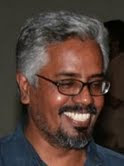The 'Science' of Media Facts, Media Future

The study published by Kerala Sastra Sahitya Parishad ' Kerala Padanam, Keralam Engane Jeevikkunnu? Keralam Engane Chinthikunnu? '(2006), apart from other socio-economic findings, poses several interesting questions about the prevalence of media in Kerala society.
According to the KSSP survey, though radio still continues to be the most prevalent medium of the households (66 per cent), television is rapidly gaining ground (61 per cent) cruising ahead of the traditional medium of newspapers ( 48.2 per cent). Internet still remains a 'medium of the future' and stay far behind with only 2 per cent of the households in the survey using it. That radio continues to be the most popular household medium (the 'tribal drum' as Marshall McLuhan described it) should be great news to the many private FM radio stations to be launched this year in Kerala, though their revenue models leaves one totally baffled. Most significantly because, radio still continues to be a poor man's medium, with more of its listeners still at the lower economic strata of society.
Another interesting insight is the answer to the question about the most 'reliable media source'. The majority of the respondents (47.9 per cent) stood by television as the most reliable information source, pushing back both newspapers ( 26.8 percent ) and radio (24.5 percent). This speaks volumes about the increasing role of television in our public and private lives. As for media exposure, the survey shows that while 71.3 per cent of the respondents watch televisions, only 23.9 per cent go for movies on a regular basis. Again something that demands a lot of soul searching on the part of the film industry.
But when one comes to the preference of programmes, it seems to be following very conventional stereotypical lines, closely following that of the newspapers. For instance, there is still a huge gender difference with regard to the 'commonly watched programmes' by them. While men spend 43.1 per cent of their TV time on news programmes, women spend only 7.4 per cent on it, showing more preference for serials (67.6 per cent). It is significant to note that the youth segment spends only 5.5 per cent on news programmes while allotting greater time for music and cinema ( 28.8 per cent) and serials (23.2 per cent). This data is also a pointer to the fact that our news content and news based programmes do not still address these segments in a serious and inclusive manner.
These insights have important lessons to the science education movements too. The media landscape of last century was characterized by the presence of limited number of media organisations which had control over scarce distribution outlets and operated within a closed and controlled world. And they were predominantly concerned with physical products, like books, and functioning within closed technologies. It was a world where scarcity of content was the norm. But the contemporary media situation is radically different. It is one of excess and due to low cost digital production technologies, we have more and more content creators, aggregators and owners out there. This has made possible an unprecedented surge in creation, modification and remixing of content by the people formerly known as the audience. This has also opened up radical opportunities in the broadcasting front, where community radio and television stations are springing up all over the world.
The lessons of the survey points to the urgency of the need for our science education movements to harness new media, that is essentially interactive and participatory in nature, to create and nurture a culture of open dialogues and exchange.
Labels: kerala sastra sahitya parishad, science education media

